The first in a series of coronal mass ejections (CMEs) has arrived (see this STCE newsflash on the latest solar activity)! DSCOVR recorded a shock in the solar wind speed at 16:38UTC (ACE shock page), driving its values from around 460 km/s to a whopping 720 km/s (yellow curve in graph underneath). More importantly, the Bz, i.e. the north-south component of the solar wind's magnetic field that governs the strength of the geomagnetic storm, went down to -46 nT (red curve in graph underneath). This is the lowest value in nearly 20 years, indeed a value not seen during the entire previous solar cycle SC24! We have to go back to the declining phase of SC23 such as e.g. in August 2005 to find even more negative values. The other component driving the strength of a geomagnetic storm is the duration that Bz stays negative. In this case, it has been negative for about 2 hours so far, and is not steady at deep negative values.
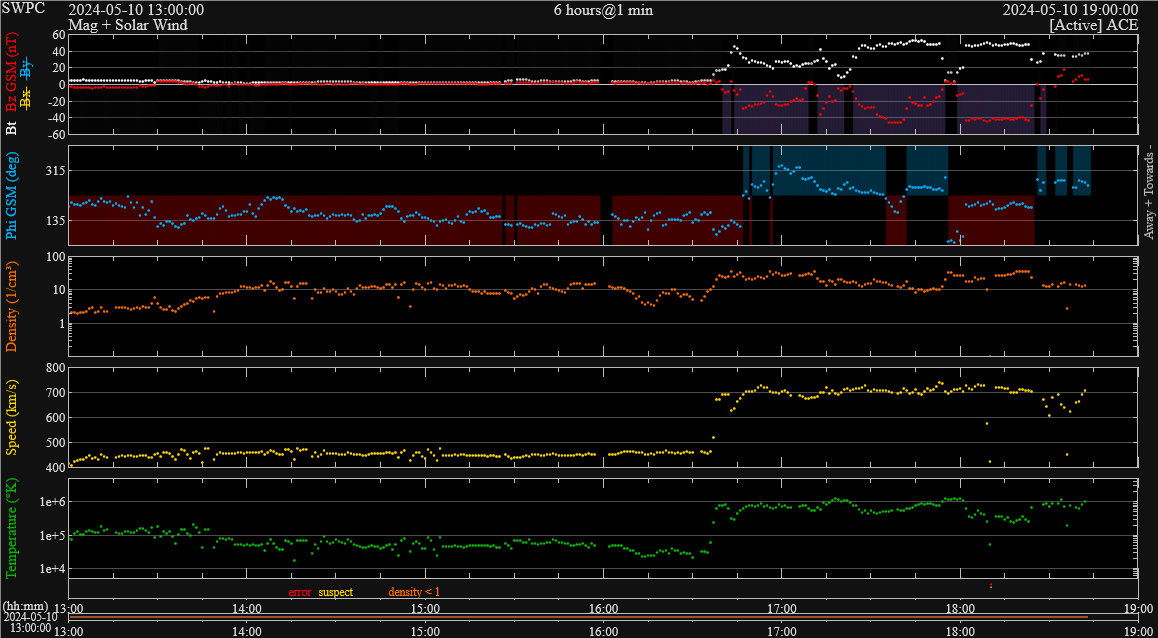
When the interplanetary CME arrived at Earth, magnetometer stations all over the world recorded an abrupt jump in the magnetic field strength. In Dourbes, Belgium for example, a jump of about 140 nT has been recorded shortly after 17UTC (a "Storm Sudden Commencement"). The Disturbance storm time index (Dst ; WDC Kyoto) also jumped to 60 nT, due to the compression of the dayside magnetosphere. It will go strongly negative during the coming hours. Geostationary satellites are currently exposed to the turbulent solar wind in the magnetosheath, as the CME has pushed the magnetopause inside the geostationary orbits (a so-called magnetopause crossing). GFZ Potsdam recorded a severe geomagnetic storm during the 15-18UTC interval (Kp = 8-), and is already back at severe storms levels for the 18-21UTC interval (map). This is all indicative of a potent geomagnetic storm in the building, and may become further enhanced upon the arrival of the other CMEs NOAA 3664 unleashed during the previous days. Kp values of 8 mean that aurora may be visible and certainly photographed from Belgium, weather permitting. Power grids (higher latitudes), HF radio communications, satellite operations and GNSS applications may be affected (G4 at the NOAA G-scale). The conditions may persist throughout the weekend.
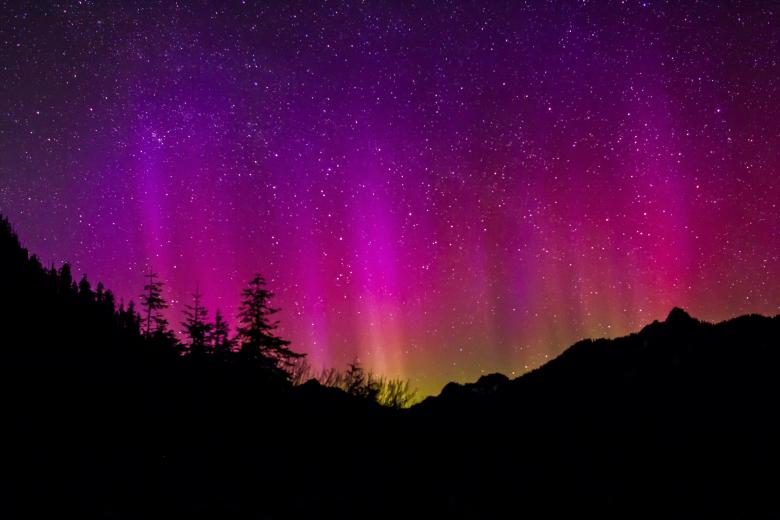
Credits: Pixabay (2016) - Source: Stockvault
UPDATE 11 May 2024 at 07:30UTC - An extremely severe geomagnetic storm (Kp=9) developed during 10-11 May. Kp of 9 was reached during the 21-24 and 00-03UTC intervals (GFZ Potsdam ; Map). The K_Bel index, based on observations in Dourbes and Manhay (Belgium) reached 8 (severe). The vertical component of the interplanetary Magnetic Field (Bz) reached -50 nT at 21:51 UTC and 00:48 UTC, a very rare event indeed not seen in nearly 20 years. Bz was mostly negative since the start of the geomagnetic storm, currently between -30 and -40 nT (DSCOVR ; Map). Solar wind speed is still near 700 km/s, but is showing signs of decline. The Disturbance storm-time index (Dst) reached a preliminary extreme of -412 nT. This is a value not seen since 20 November 2004, and stronger than the famous Halloween storms (-383 nT). A strong Forbush decrease, i.e. a decrease in cosmic rays due to the shielding of this potent CME, has been observed (Oulu ; -10%). Aurora have been observed as far south as Texas and Florida in the United States, Spain and Italy in Europe, and from Australia and New Zealand (Spaceweather.com). In Belgium, the aurora were bright enough for people to grab their lawn chair and watch the spectacle from their backyard. Underneath is a compilation of pictures (handheld GSM) taken by STCE members last night (Freek Verstringe, Emil Kraaikamp, Brenda Dorsch and Jan Janssens). This storm is not over yet, with more CMEs on their way to Earth. Strong geomagnetic storming is still possible for the next 2 nights.

UPDATE 11 May 2024 at 18:30UTC - An extremely severe geomagnetic storm (Kp=9) developed during 10-11 May. Kp of 9 was reached during the 21-24UTC, 00-03UTC and 09-12UTC intervals (GFZ Potsdam ; Map). The K_Bel index, based on observations in Dourbes and Manhay (Belgium) also reached 9 (extremely severe) during the latter interval. The vertical component of the interplanetary Magnetic Field (Bz) is gradually weakening and returning to more nominal values, currently varying between -5 and -25 nT. Bz was mostly negative since the start of the geomagnetic storm (DSCOVR). Solar wind speed has stepped up to values near 800 km/s. The Disturbance storm-time index (Dst) reached a preliminary extreme of -412 nT and is still at very low values near -250 nT. Aurora have been observed at very southern latitudes (Spaceweather.com). Underneath is another picture by Brenda Dorsch (STCE) of last night's aurora as seen from Belgium. This Earth's magnetic field is still severely disturbed, and so the geomagnetic storm is not over yet, with more CMEs on their way to Earth. Severe to extremely severe geomagnetic storming is possible tonight and for the night of sunday to monday (SIDC). Thus weather permitting, there remains a good chance for aurora to be visible from Belgium during these nights.
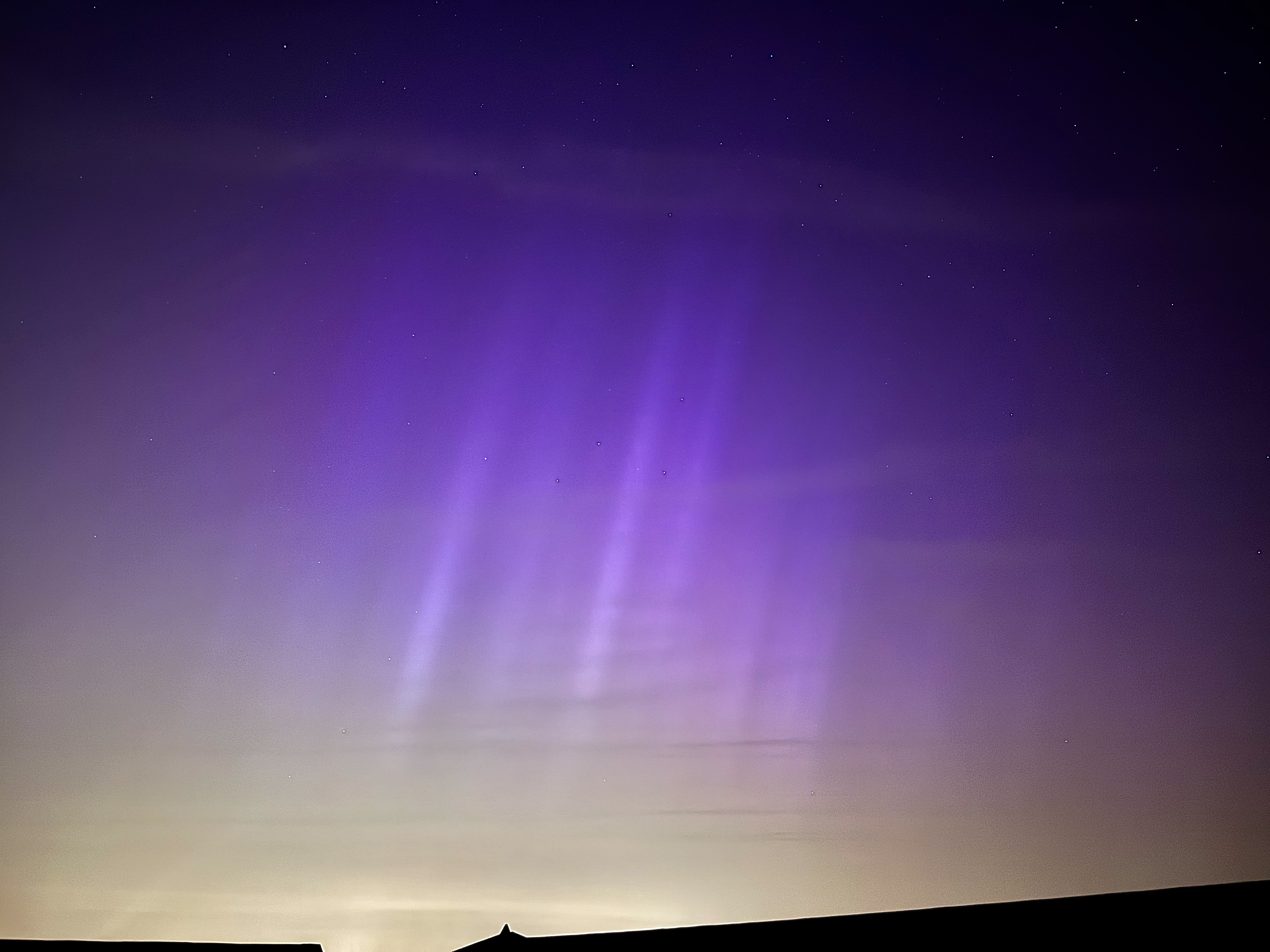
UPDATE 12 May 2024 at 19:15UTC - Solar wind measurements (DSCOVR) and geomagnetic observations indicate that the 10-11 May extremely severe geomagnetic storm (Kp=9) has fully subsided now. Standing-by for the arrival of any of the other earth-directed CMEs observed during the last few days. The vertical component of the interplanetary Magnetic Field (Bz) has been very close to 0 nT for the entire 12 May so far (red curve in map underneath). Nonetheless, solar wind speed remained high with values in the 850-900 km/s range (yellow curve). The Disturbance storm-time index (Dst) reached a preliminary extreme of -412 nT and is gradually recovering. If another CME arrives later tonight or tomorrow 13 May, then there's again a good chance on a severe geomagnetic storming, potentially developing into an extreme storm. Thus weather permitting, there remains a chance for aurora to be visible from Belgium.
The clip underneath provides a good view on the dynamics of the aurora early on 11 May, as captured by Emil Kraaikamp (STCE) from Beersel, Belgium. He writes "... a small animation in blue light spanning 2 minutes in total (it's a little loop consisting of 10 images, each exposed 10 seconds, at 12 second cadence). This was around 02:40 local time on the border of Beersel/Drogenbos. Visually this was tricky to spot due to the bright background, occasionally you could see a bit of a bright column. It was much easier to see 2 hours earlier."
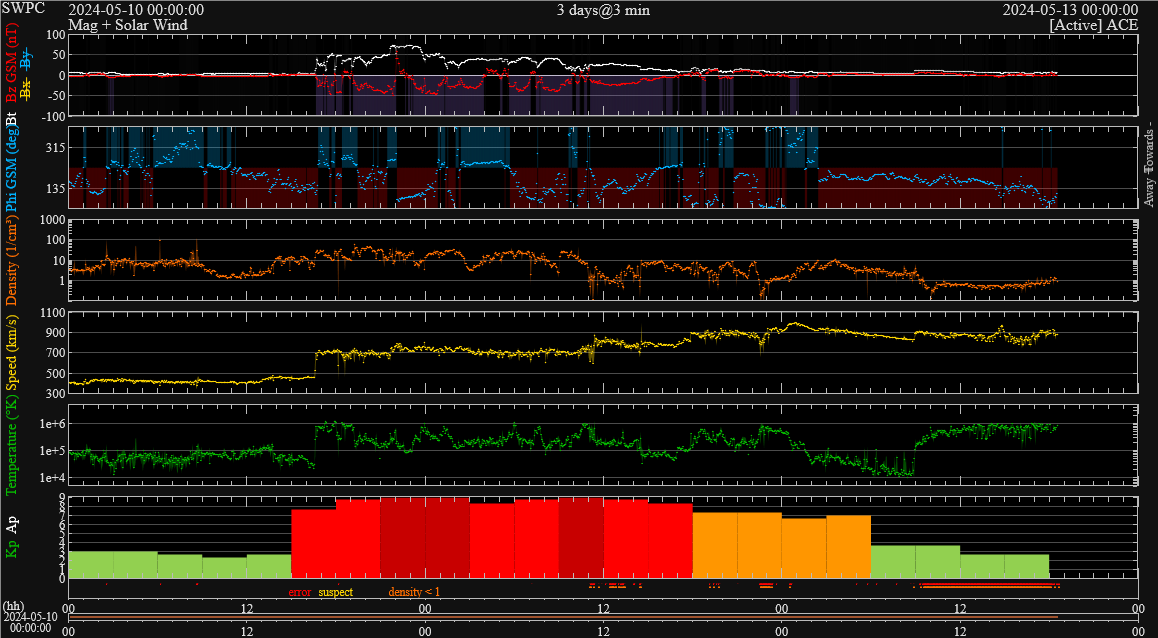
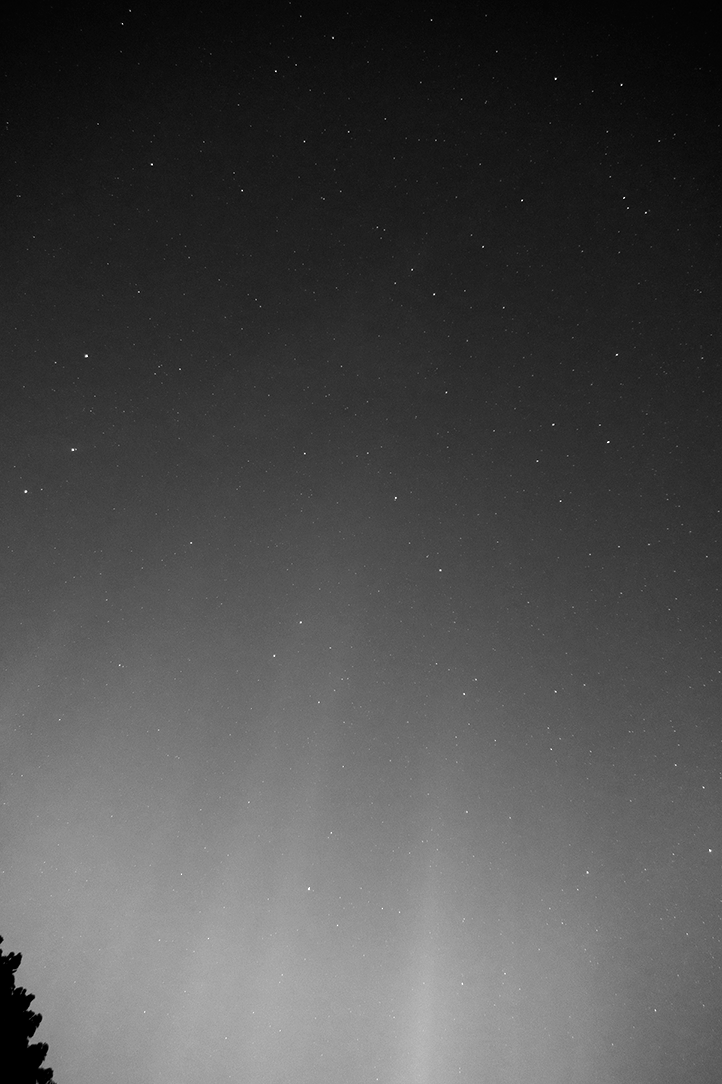
Credits: Emil Kraaikamp
UPDATE 14 May 2024 at 15:30UTC - A small correction has been made in this article to reflect the correct (preliminary) minimum value that the Disturbance storm-time index (Dst) reached during the extreme storm from last weekend. That value is -412 nT. Impacts from the storm seem to have been limited to a number of drones that were lost or behaved erratically during the storm, and agricultural workers who were forced to suspend activities entirely, in both cases due to disturbed GNSS applications (Global Navigation Satellite Systems, such as GPS and Galileo). This was also reflected in the reduced availability of certain GNSS-based aviation tools, such as LPV200 (WAAS, EGNOS; STCE Newsitem). In particular for WAAS, where LPV200 was absent from around 19UTC on 10 May until 10UTC on 11 May, i.e. during the most powerful phase of the geomagnetic storm. Power grid networks were doing quite well, due to precautionary actions such as in New Zealand (see the dedicated Wikipedia page for updated impacts from this storm). Radio meteor observers reported excessive noise in their recordings during the storm (BRAMS). It is clear that over the next few months more details on affected domains will become known.






